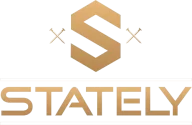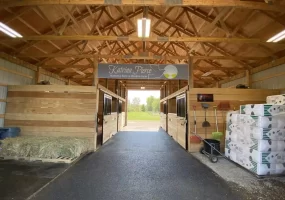Building a pole barn is an exciting endeavor, but before you can dive into the construction process, there's an essential step that must be addressed: obtaining the necessary permits. For many, the permitting process can be daunting, filled with confusing jargon and intricate regulations. This is where Stately steps in, providing a seamless experience and handling the complexities of the permitting process for you.
The Intricacies of Pole Barn Permitting
Permitting for pole barns isn't a straightforward process. Depending on your project's location and intended use, the type of permit you need varies. In a town, the regulations might differ from those in the country. This variability can make it challenging for individuals to determine the exact permits they require.
Furthermore, it's essential to be aware of common restrictions like setback, easement, height, and lot coverage. Each of these terms has specific definitions and implications:
- Setback: The required distance between a building and the property line.
- Easement: A legal right given to another owner, such as a utility company, to cross or access a portion of another's property.
- Height & Lot Coverage: Regulations dictating the maximum height of a building and the percentage of the lot it can occupy.
Deciphering Code Regulations
1. Zoning Regulations: These dictate how a building can be positioned and its intended use, encompassing aspects like parking, signage, setbacks, and more. Before investing time in designing, it's crucial to check with the local zoning board.
2. Covenants: Enforced mainly by Homeowners Associations, covenants add an additional layer of rules atop zoning regulations. They provide specific guidelines about what's permissible within a subdivision.
3. Building Codes: Ensuring that buildings are structurally sound and safe is paramount. Post frame structures, especially those intended for commercial use, must adhere to these local construction codes.
Additional Permitting Aspects
Beyond the primary building permit, there might be a need for additional licenses. These could range from permits for utilities hookup, well drilling, septic system installation, or even specific construction timelines.
Moreover, when you're ready to get your permit, you'd typically need to submit a detailed application, including blueprints, site plans, and property descriptions. And, of course, there's the associated cost, which is influenced by factors like building size, segment, and jurisdiction.
Why Choose Stately?
At this point, you might be feeling overwhelmed, and that's entirely understandable. The permitting process is intricate, and any missteps can lead to delays or unforeseen costs.
This is where Stately's expertise becomes invaluable. We not only understand the intricacies of the permitting process but also have the experience and resources to manage it efficiently. By choosing Stately, you can:
- Avoid Pitfalls: With our experience, we preemptively identify potential issues, ensuring a smooth process.
- Save Time: Instead of navigating the labyrinth of permits yourself, Stately handles it, letting you focus on your project.
- Stay Informed: We keep you updated at every step, ensuring transparency and clarity.
So, as you embark on your pole barn construction journey, remember that with Stately by your side, the permitting process becomes one less thing to worry about. With our expertise, your dream project will swiftly move from concept to reality, with all the necessary paperwork in perfect order. Choose Stately, and build with confidence.







